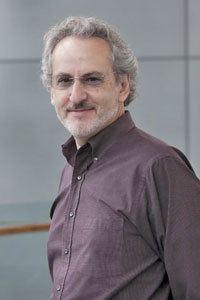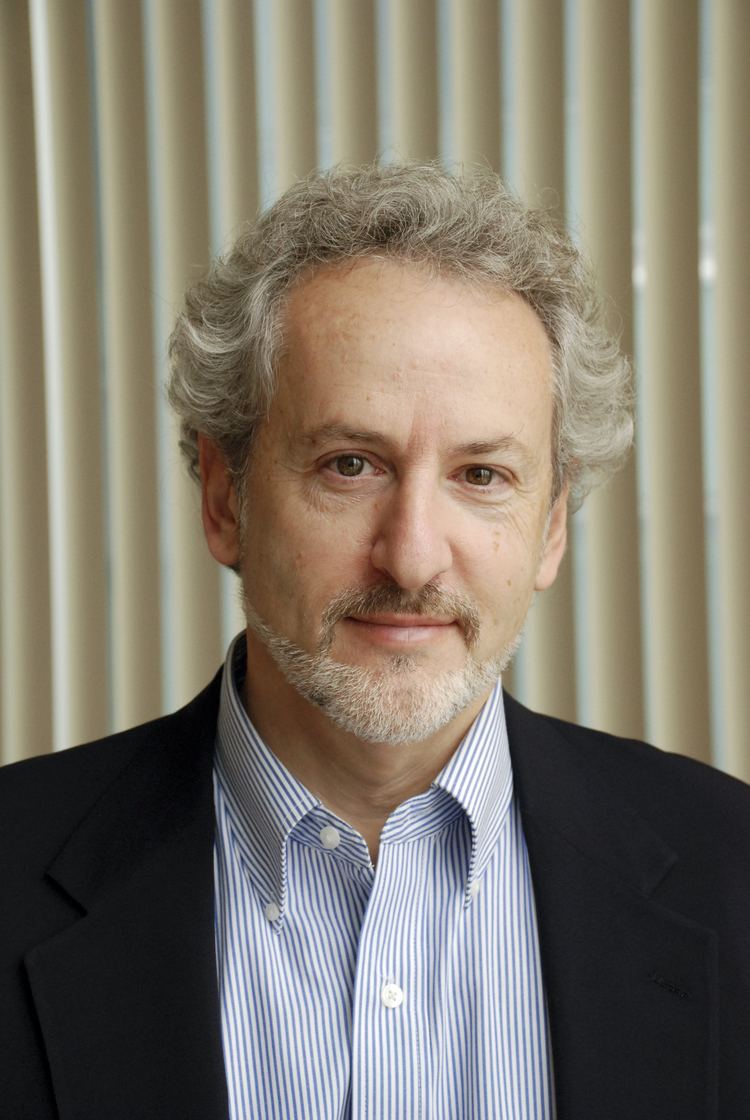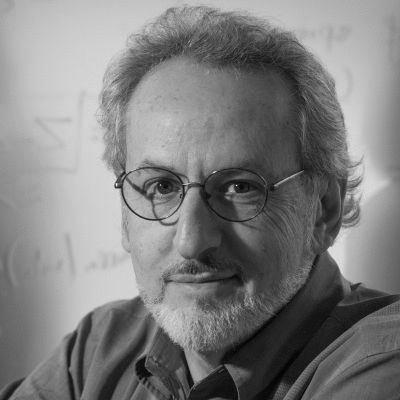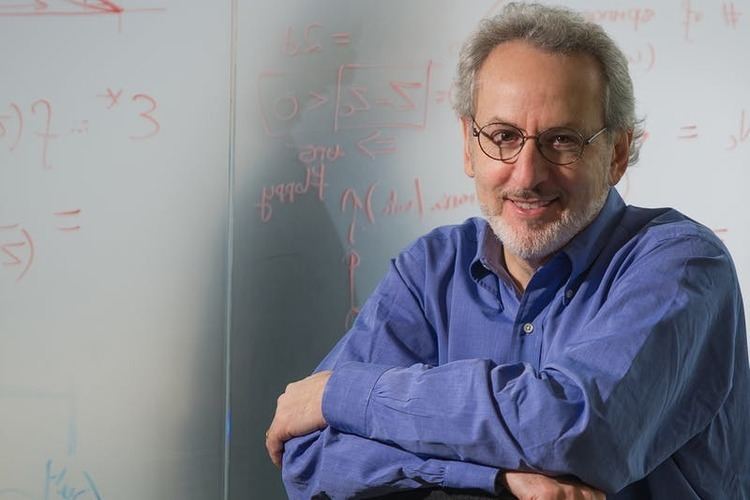Name Donald Ingber | Role University Professor | |
 | ||
Education Yale College, Yale University | ||
Donald Ingber's talk
Donald E. Ingber (born May 1, 1956, East Meadow, NY) is an American cell biologist and bioengineer, the Founding Director of the Wyss Institute for Biologically Inspired Engineering at Harvard University, the Judah Folkman Professor of Vascular Biology at Harvard Medical School and the Vascular Biology Program Boston Children's Hospital, and Professor of Bioengineering at the Harvard John A. Paulson School of Engineering and Applied Sciences. He is also a member of both the American Institute for Medical and Biological Engineering and the Institute of Medicine of the U.S. National Academies.
Contents
- Donald Ingbers talk
- Session 2 Donald E Ingber MD PhD
- Education and academic research
- Scientific career
- Significant contributions
- Leadership and public service
- Recognition
- Art and Design Exhibitions
- Personal life
- References

Ingber is a founder of the emerging fields of biologically inspired engineering. He has made pioneering contributions to numerous other disciplines including mechanobiology, cytoskeletal biology, extracellular matrix biology, integrin signaling, tumor angiogenesis, tissue engineering, nanobiotechnology, systems biology, and translational medicine. Ingber has authored more than 400 publications in scientific journals and books, and is an inventor on more than 130 patents spanning anti-cancer therapeutics, tissue engineering, medical devices, drug delivery systems, biomimetic materials, nanotherapeutics, and bioinformatics software.

In addition to serving as director of the Wyss Institute at Harvard University, Ingber currently heads active laboratories in the Biomimetic Microsystems Platform at the Wyss Institute and in the Vascular Biology Program at Boston Children's Hospital, which are located in adjacent buildings in the Longwood Medical and Academic Area of Boston. In the Biomimetic Microsystems platform at the Wyss, microfabrication techniques from the computer industry are used to build functional circuits with living cells as components. The Ingber Laboratory at Children's Hospital addresses the fundamental problem of how cells decide whether to move, grow, contract, differentiate, or die during tissue development. The major focus is on angiogenesis—the growth of blood capillaries—a process that is critical for the growth of cancer and many other debilitating diseases. The group is also developing novel cancer reversal therapies.

Ingber has been scientific founder of three companies: Neomorphics, Inc., a tissue engineering startup which led to clinical products through subsequent acquisitions (Advanced Tissue Sciences Inc.); Molecular Geodesics, Inc., (later known as Tensegra, Inc.) which 3D-printed medical devices; and most recently, Emulate, Inc., which formed in 2014 to commercialize human ‘organs-on-chips’ that accelerate drug development, detect toxicities and advance personalized medicine by replacing animal testing.

Session 2: Donald E. Ingber, MD, PhD
Education and academic research

Ingber received a combined B.A./M.A. in molecular biophysics and biochemistry from Yale College and Yale Graduate School in 1977; a M.Phil. in cell biology from Yale Graduate School in 1981; and a combined M.D./Ph.D. from Yale University School of Medicine and Yale Graduate School in 1984. At Yale University, he carried out undergraduate research on DNA repair with Paul Howard-Flanders and on cancer metastasis with Alan Sartorelli. Ingber worked on development of cancer therapeutics with Kenneth Harrap at the Royal Cancer Hospital/Royal Marsden Hospital in England with support from a Bates Traveling Fellowship. Ingber carried out his Ph.D. dissertation research under the direction of Dr. James Jamieson in the department of cell biology, and his advisory committee included George Palade, Elizabeth Hay and Joseph Madri. From 1984 to 1986 he completed his training as an Anna Fuller Postdoctoral Fellow under the mentorship of Dr. Judah Folkman in the Surgical Research Laboratory at Boston Children's Hospital and Harvard Medical School.
Scientific career
Significant contributions
Ingber is best known for his discovery of the role mechanical forces play in developmental control and in cancer formation, and for his application of these principles to develop bioinspired medical devices, nanotechnologies, and therapeutics. Ingber's early scientific work led to the discovery that tensegrity architecture - first described by the architect Buckminster Fuller and the sculptor Kenneth Snelson - is a fundamental design principle that governs how living systems are structured, from individual molecules and cells to whole tissues, organs and organisms.
Ingber’s work on tensegrity led him to propose that mechanical forces play as an important role in biological control as chemicals and genes and to investigate the molecular mechanism by which cells convert mechanical signals into changes in intracellular biochemistry and gene expression, a process known as ‘mechanotransduction’. Ingber determined that living cells use tensegrity architecture to stabilize their shape and cytoskeleton, that cellular integrins function as mechanosensors on the cell surface, and that cytoskeletal tension (or ‘prestress’, which is central to the stability of tensegrity structures) is a fundamental regulator of many cellular responses to mechanical cues. Ingber’s tensegrity theory also led to the prediction in the early 1980s that changes in extracellular matrix structure and mechanics play a fundamental role in tissue and organ development, and that deregulation of this form of developmental control can promote cancer formation.
Ingber’s contributions in translational medicine include discovery of the first angiogenesis inhibitor compound (TNP-470) to enter clinical trials for cancer, creation of tissue engineering scaffolds that led to clinical products, development of a dialysis-like blood cleansing device that could reduce deaths from sepsis in hospital patients, creation of a mechanically-activated nanotechnology for targeting clot-busting drugs to sites of vascular occlusion, and co-development of a new surface coating based on Slippery Liquid Infused Porous Surfaces (SLIPS) for medical devices and implants that could eliminate the conventional dependency on anticoagulant drugs that pose life-threatening side-effect risks.
One of his more recent innovations is a microfabrication method for building tiny, complex, three-dimensional models of living human organs. These "organs-on-chips," which mimic complicated human organ functions, are being designed to replace traditional animal-based methods for testing of drugs and toxins. The first human organ-on-a-chip, the human "lung-on-a-chip", was reported in Science in 2010. Created using microchip manufacturing methods, the lung-on-a-chip is a complex three-dimensional model of a breathing lung that incorporates living human lung cells within microfluidic channels in silicone rubber. In 2012, Ingber and his team demonstrated in a study in Science Translational Medicine the ability to mimic a complex human disease on the lung-on-a-chip — specifically pulmonary edema, known commonly as “fluid on the lungs” — and to identify new therapeutics using this model. As an alternative to animal studies, the lung-on-a-chip could be used to study the safety and efficacy of new drugs, accelerating the introduction of new drugs to market while significantly lowering research costs. Ingber’s group extended this technology to develop a human gut-on-a-chip that undergoes peristalsis and supports growth of a living microbiome, a kidney tubule on a chip that mimics drug toxicities, as well as a bone marrow-on-a-chip that reconstitutes a full hematopoietic niche. In 2012, Ingber’s team was awarded a DARPA contract to string together ten organs-on-chips to build an automated human body-on-chips that will recapitulate whole-body physiology. This instrumented "human body-on-a-chip" could be used in combination with computational modeling to rapidly assess responses to new drug candidates, providing critical information on their safety and efficacy.
Other new technologies from Ingber’s lab include development of a fully biodegradable plastic alternative inspired by natural cuticle material found in shrimp shells and insect exoskeletons, known as “Shrilk”; a mechanically activated nanotherapeutic that selectively directs clot-busting drugs to sites of vascular occlusion while minimizing unintended bleeding; an siRNA nanoparticle therapy that prevents breast cancer progression; a dialysis-like sepsis device called the ‘biospleen’ that cleanses blood of all infectious pathogens, fungi and toxins without requiring prior identification or pathogen targeting; and a surface coating for medical materials and devices that prevents clot formation and bacteria accumulation, which reduces the need for use of conventional anticoagulant drugs that frequently result in life-threatening side effects.
Leadership and public service
Ingber has helped to bridge Harvard University, its affiliated hospitals, and the Massachusetts Institute of Technology (MIT) through his involvement in the Center for Integration in Medicine and Innovative Technology, Harvard-MIT Division of Health Sciences and Technology, and Dana-Farber/Harvard Cancer Center. He also has been a member of the Center for Nanoscale Systems and the Materials Research Science and Engineering Center at Harvard, as well as the MIT Center for Bioengineering.
In 2009, Ingber was named Founding Director of the Wyss Institute for Biologically Inspired Engineering at Harvard University, which was launched with a $125 million gift— which at the time was the largest philanthropic gift in Harvard's history—from Swiss philanthropist and entrepreneur Hansjorg Wyss. The Wyss Institute was founded to enable high-risk research and disruptive innovation, and to catalyze the emerging field of biologically inspired engineering in which newly uncovered biological design principles are leveraged to develop new engineering innovations in the form of bioinspired materials and devices for medicine, industry, and the environment. The Institute is a partnership among Harvard University, its major affiliated hospitals (Beth Israel Deaconess Medical Center, Brigham and Women's Hospital, Boston Children's Hospital, Dana Farber Cancer Institute, Massachusetts General Hospital, Spaulding Rehabilitation Hospital), Boston University, Massachusetts Institute of Technology, Tufts University, University of Massachusetts Medical School, Charité - Universitätsmedizin Berlin, and University of Zurich.
Ingber is a member of the National Academy of Medicine, the National Academy of Inventors, the American Institute for Medical and Biological Engineering, and the American Academy of Arts and Sciences. He served as a member of the Space Studies Board of the U.S. National Research Council (NRC), which advises the National Academy of Sciences, National Academy of Engineering, and National Institute of Medicine, and he chaired its Committee on Space Biology and Medicine. He has been an external reviewer of multiple NRC reports, including “Plan for the International Space Station,” “Future Biotechnology Research on the International Space Station,” "Assessment of Directions in Microgravity and Physical Sciences Research at NASA", and “The Astrophysical Context of Life.”
Ingber also has served on the Innovation Review Panel of the Grand Challenges in Global Health grant program for the Bill & Melinda Gates Foundation, the Nanobiotechnology Committee of the National Institutes of Health and the National Science Foundation, and the Board of Directors for the Eunice Kennedy Shriver Center for Mental Retardation.
As of 2016, he sits on Harvard University’s Graduate School of Design Advisory Board, the Singapore Agency for Science, Technology, and Research (A*STAR) Science and Technology Advisory Committee, the External Advisory Board at Le Laboratoire Cambridge, Harvard University’s Allston Enterprise Research Campus Planning Committee, the Tufts University Institute for Innovation External Advisory Committee, the Advisory Board of Harvard Center for Green Buildings and Cities, and the Wyss Center for Bio- and Neuro-Engineering Board of Directors.
Recognition
Ingber has received numerous award and distinctions, including:
Ingber has also been named to multiple Who's Who lists for his diverse contributions including: Science and Engineering (1991), America (1994), the World (1997), Medicine and Healthcare (1999), and Business Leaders and Professionals—Honors Edition (2007).
Art and Design Exhibitions
Ingber collaborates internationally with artists, architects, and designers, as well as scientists, physicians, engineers, and the public. Examples of his involvement in the art/design community include:
Personal life
Ingber lives with his wife in Boston and in Chilmark, Massachusetts.
